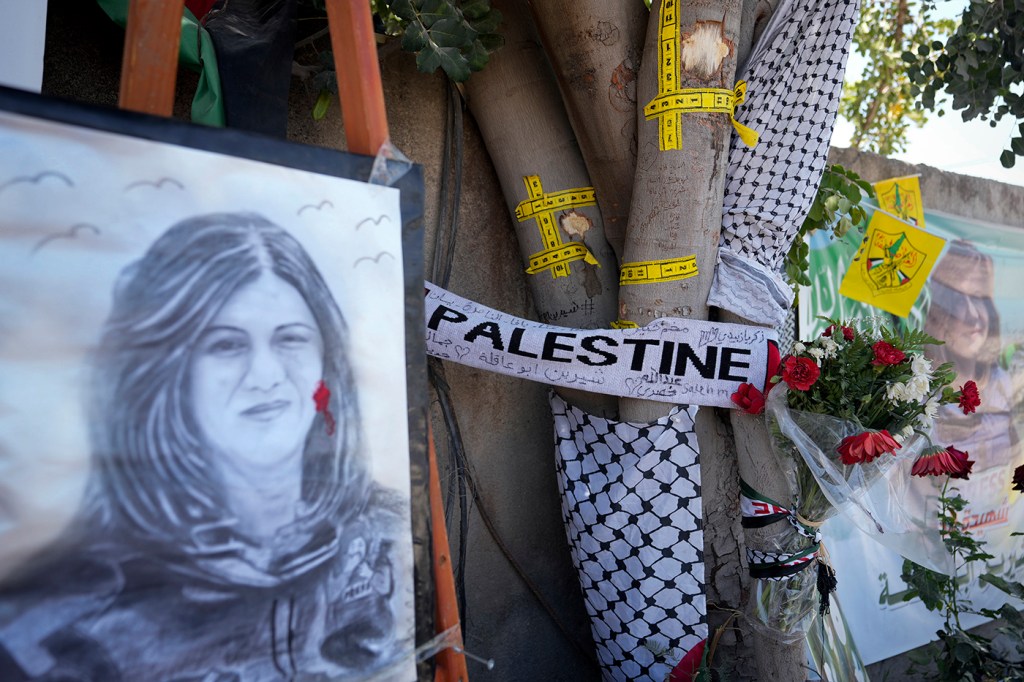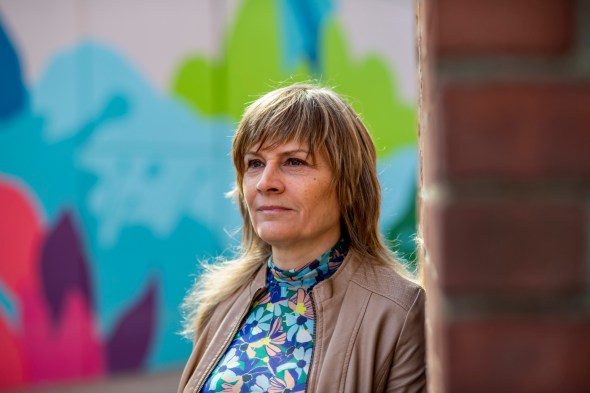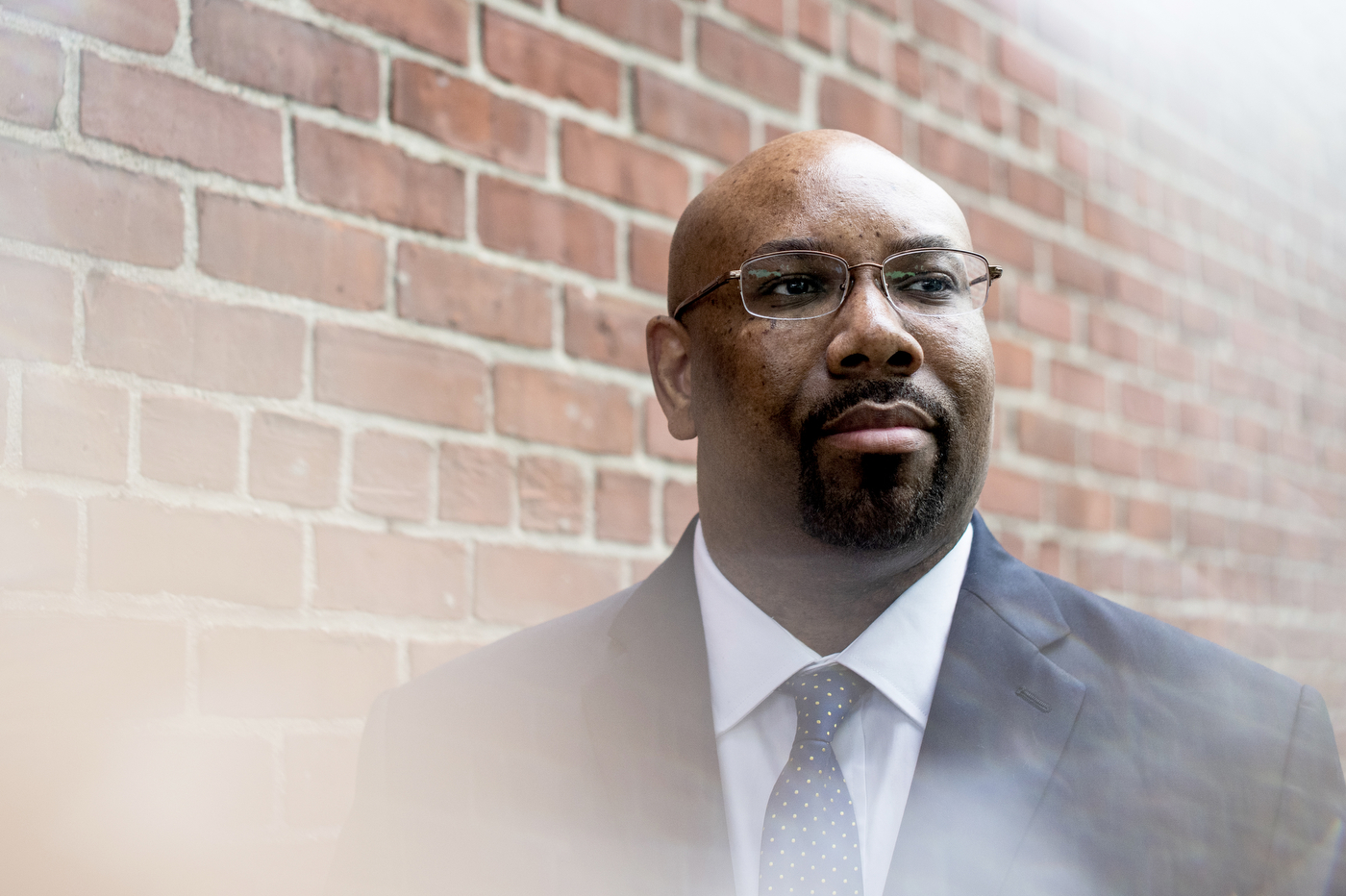Is today’s world a more dangerous place for journalists?

On May 11, Palestinian-American journalist Shireen Abu Akleh was shot and killed by an Israeli soldier while reporting for Al Jazeera in the West Bank, according to the news network.
Only days before, nearly 8,000 miles away in Mexico, three journalists were killed within the span of three days, marking 11 reporters killed there since the start of the year. Just a day after Abu Akleh’s slaying, Chilean journalist Francisca Sandoval died from wounds she suffered after being shot in the head while covering a protest.
The recent spate of killings of reporters begs an important question, experts in the field say: Is today’s world a more dangerous place for the press?
Jody Santos, a human rights filmmaker and visiting assistant teaching professor of journalism at Northeastern University, argues yes, noting that the rise in authoritarianism around the globe is making the job of journalists more dangerous. She points out that world leaders — like former U.S. President Donald Trump, Mexican President Andrés Manuel López Obrador, and others — vilify the press. Through their polarizing rhetoric, they normalize aggressive behavior toward those reporting the news, she says.

Jody Santos, a human rights filmmaker and visiting assistant teaching professor of journalism. Photo by Alyssa Stone/Northeastern University
“When you say ‘fake news, fake news’ or ‘journalists are the enemy,’ it creates this more permissive environment for physical attacks on the media,” Santos says. “It creates an atmosphere where it’s permitted to commit violence against journalists.”
Marcus Howard, an award-winning reporter and associate teaching professor of journalism at Northeastern, agrees that journalists are viewed more negatively
now in the United States and around the world. Politicians in Brazil, Mexico, Russia, Venezuela, the U.S. and other countries continue to denounce members of the press as “fake news” and treat them with hostility, he notes.
“That definitely has had a negative impact on how journalists are viewed and contributed to threats to journalists,” Howard says.
Howard notes that increased accessibility to news through the internet has compounded the threats journalists face by making authoritarian leaders feel like their power is in jeopardy, making it more likely that they would treat journalists as enemies.
“The internet has exposed a lot of people to other parts of the world. When you have information at people’s fingertips, that’s a threat to places with leaders who want to restrict people’s rights and freedoms,” Howard says. “The press should be holding leaders accountable for their actions. We want a vibrant press that … exposes wrongdoing in governments and corporations. All of that is important for a society to function.”
Additionally, when a journalist is assaulted or killed in a country with a government that is hostile toward press freedoms, the person responsible is not often prosecuted, Santos says. She adds the absence of consequences has a ripple effect, sending a dangerous message that nothing will happen if a journalist is attacked.
Rather, she points out, world leaders ought to try to send a different message, “that a crime against a journalist is a crime against the country, and the freedom of the press is incredibly important for democracy.”
Supporting the idea that the world has become a more dangerous place for journalists, various press freedom trackers have downgraded several countries’ ranks in relation to their journalistic protections, Howard notes.
This year’s World Press Freedom Index, which assesses the state of journalism in nearly 200 nations, ranked the United States 42nd in press freedoms, giving it only a “satisfactory” rating. The index gave only eight countries the highest “good” rating, compared to 25 in 2013.

Marcus Howard, associate teaching professor in the School of Journalism. Photo by Matthew Modoono/Northeastern University
“Journalism is under threat,” Howard says. “A lot of people think we in the United States have a free environment for the press to operate in, but these press freedom trackers have downgraded the United States in some cases. That’s a challenge.”
Howard and Santos point out that the dangers journalists face take different forms. Beyond being assaulted or killed, they could have their equipment or documents taken away; they could be surveilled and tracked by the government; or they could even be arrested and detained.
They say many racial justice demonstrations organized in the United States in 2020. During these protests, journalists were attacked for doing their job and even questioned and arrested by law enforcement.
A documentary filmmaker who has traveled to dozens of countries, reporting on everything from refugee crises in Kenya to the human trafficking of women and girls in Nepal, Santos has faced some of the very threats she discusses. She often has armed security with her on assignments and, if not, employs safety protocols with fellow journalists if they sense danger.
“Just pulling out the camera and tripod automatically can send off signals and make you a target,” Santos says. “But as a journalist, as a filmmaker, you just never know where the danger is going to come from. One time, we were stopped in Honduras by the police, which are notoriously corrupt, and that was probably the time we were most in danger, with the police.”
Santos is also the executive director of a media organization called the Disability Justice Project, which trains people with disabilities in the Global South on digital storytelling. Much of its curriculum centers on teaching journalists about the array of threats they could face as well as the safety protocols they should use, including turning off location services so they cannot be tracked, backing up their personal documents in case they get lost or confiscated, and not posting on social media about where they are going so they will not be targeted.
Journalists are not just experiencing physical dangers though, Santos says. There are also emotional risk factors that reporters experience in the field that the Disability Justice Project talks with participating fellows about, primarily posttraumatic stress.
“Probably in the last decade, we’ve been hearing a lot more talk about posttraumatic stress among journalists. That term was something that was used for a lot of first responders, like police officers and firefighters,” Santos says, “but journalists are also experiencing trauma on a very deep and personal level.”
In courses she teaches at Northeastern, Santos notes, she talks with students about their physical and emotional safety. If they are reporting on an issue that could be triggering for them, she makes sure to talk to them about working through it, or whether they want to switch to a different assignment.
“Now, the conversations are starting to open up a little bit, and it’s more acceptable to talk about the emotional risks along with the physical risks,” Santos says.
For media inquiries, please contact media@northeastern.edu.





